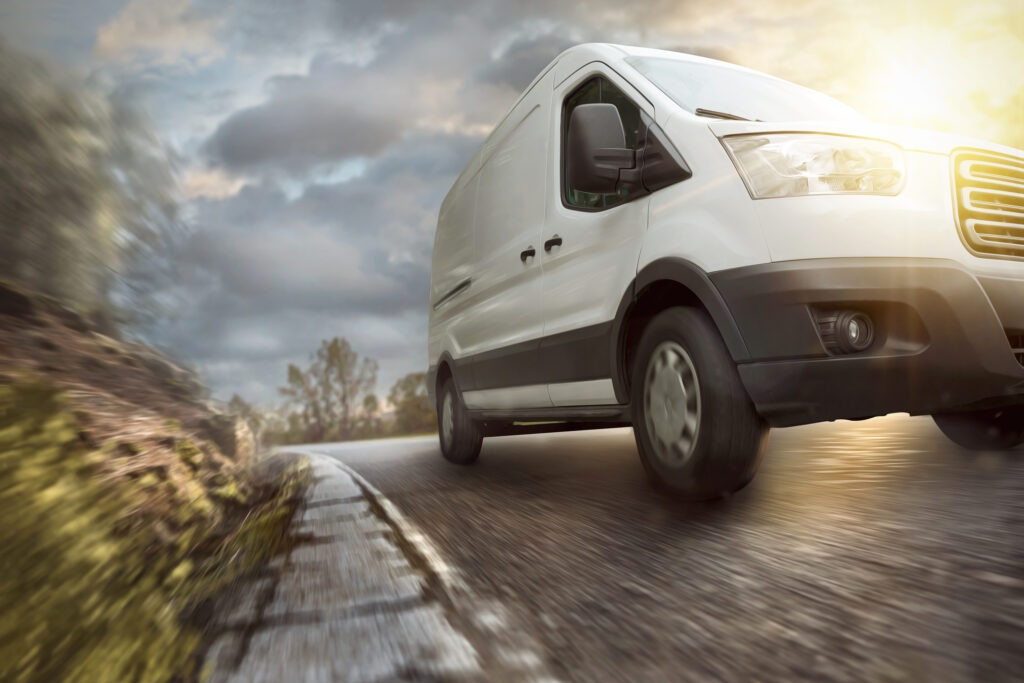Diesel dominates and EVs surge as EU commercial vehicle market rebounds
02 February 2024

While the European commercial vehicle market saw positive growth across all sectors in 2023, diesel remained the dominant fuel type despite rising popularity of electric vans. However, incentive adjustments in Germany created temporary turbulence. Autovista24 special content editor Phil Curry examines the data.
The latest data from the European Automobile Manufacturers Association (ACEA) shows that the commercial vehicle market in the EU regained its momentum across 2023, with each sector posting rising registrations.
Following a difficult 2022, when the entire automotive industry was hit by the supply-chain crisis, last year gave cause for optimism. Each quarter revealed improvements, putting the industry in a better place for 2024, as it hopes to continue its momentum.
Van market continuing comeback
The light-commercial vehicle (LCV) market saw deliveries grow by 14.6% last year, with 1,467,001 units taking to roads across the EU. This concludes a year of recovery for the sector, after a problematic 2022.
However, the final total is 6% below the 2021 tally of almost 1.6 million units, while it is also 16.6% down on the pre-COVID-19 era results of 2019.
The market must then be hoping that it can carry the results of 2023 into this year. There is a clear demand for vans up to 3.5-tonnes, and as the delivery sector continues to grow, vehicles that were registered in 2021 will likely be replaced across the next 12 months as companies start to de-fleet.
Italy and Spain led the growth amongst the big four EU markets in 2023, with their LCV registrations up 22.7% and 22% respectively. Germany saw its market increase by 12.1%, while France was up 8.9%, although its tally of 378,040 units was the biggest in Europe.
Electric vans emphasise growth
Electric vans, made up of battery-electric vehicles (BEVs) and plug-in hybrids (PHEVs), saw the biggest gain in the LCV market, with 56.8% more models delivered. This led the powertrain to a 7.4% market share, the second-biggest in the EU, and two percentage points up on 2022.
Markets across the EU seem energised by the plug-in options available to LCV buyers. Only Croatia and Cyprus recorded declines in 2023, although these were based on very low deliveries in 2022.
Of the big four markets, Spain grew its figures the most, with 9,983 units equating to a 100.3% rise on the previous year. France saw growth of 76.7%, with its tally of 30,277 the highest on the continent, while Italy secured an increase of 44.8% (7,224 units).
Germany’s EV grief
Germany saw a 7.8% rise in EVs across the year. Its market was stalled by incentive changes at the start of September, which saw financial aid for EVs withdrawn for businesses. The country recorded growth of 67.1% across the first nine months of 2023 with 17,354 units, but in the last quarter it only added 3,444 units, a drop of 61.3% over the same period in 2022.
It is likely, therefore, that Germany will continue to see a decline in electric van registrations into the first quarter of 2024, as the market adapts to the loss of incentives.
Other markets to note in the electric van segment include the Netherlands, which was up 110.4% with 9,971 units, and Portugal, up by 140.5% with 2,448 units. Sweden increased its deliveries by 64.6% with 8,667 electric vans taking to the roads across the year.
Surging powertrain selection
Diesel once again dominated the LCV market in 2023, as registrations of the fuel type increased by 10.4%, with 1,211,771 units delivered. Yet its market share of 82.6% was down on the 85.7% it achieved in 2022. While only a slight dip, it does suggest that buyers are taking note of the powertrain’s predicament in the passenger car market, and may be seeking alternatives.
Three of the four big markets posted diesel growth, the largest of which was Italy, with a 28% rise. This was followed by Spain (up 19.2%) and Germany (up 11.2%). France on the other hand saw diesel deliveries decline by 1.6%, as drivers turned to different propulsion options.
Aside from electric vans, petrol also took market share from its internal-combustion engine counterpart, which saw registrations increase by 38.3% in 2023. This gave the fuel-type a market share of 6.3%, up from its 5.2% share at the end of 2022.
Hybrid powertrains, including mild hybrids, saw a marginal improvement of 4.8%, with 33,816 units. Despite this, they were the only sector to lose market share alongside diesel, falling to 2.3% after sitting at 2.5% the year prior. In the ‘other’ category, which includes hydrogen fuel-cell vehicles, as well as liquid-petroleum gas (LPG) and natural gas powered vans, increased registrations by 40.5% with 21,155 units, taking a 1.4% market share.
Truck market gains traction
The EU medium truck market, covering vehicles between 3.5-tonnes and 16 tonnes, grew by 24.8% in 2023, with 53,202 units. Unlike the LCV market, deliveries of medium trucks were also up on 2021 levels, indicating a strong recovery from the supply-chain crisis. The market was still down on pre-pandemic levels, with a drop of 11.2% compared to 2019.
The diesel market dominated again, with registrations increasing 19.7%, with 48,783 units taking to the roads. This gave the powertrain a 91.7% market share, a strong hold on the sector but down from the 95.6% it had at the end of 2022.
This market share was taken by electric vehicles (EVs), which recorded growth of 229.4% with 2,793 units. This gave the technology a 5.2% share, up from 2% a year beforehand. The market for electric medium trucks is smaller, with businesses likely to be wary of long charging times compared to petrol and diesel models, potentially impacting delivery times in the logistics sector. However, they are slowly taking share away from diesel, as fleets adapt to zero-emission mobility.
The next biggest sector was the ‘other’ category, which recorded 1,373 units, up 52.7% with a 2.6% market share. Hybrid vehicles gained 600%, although this equated to 140 units and a 0.3% hold on the medium truck market, while petrol models declined by 8.1%, their 113 units across the year giving them a 0.2% market share.



